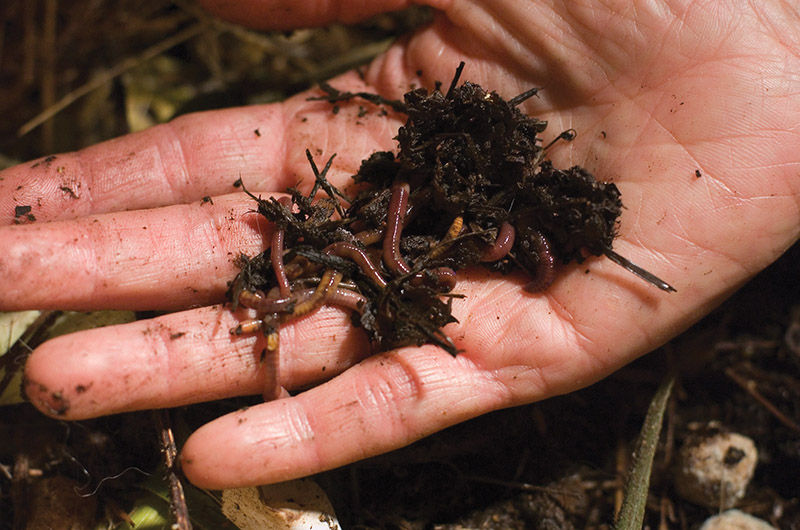Red worms: How to raise a worm bin
Red worms: How to raise a worm bin
Blog Article
Every Little Thing You Need to Learn About Red Wigglers for Composting
Red wigglers, or Eisenia fetida, play an essential function in the world of composting, changing natural waste into beneficial dirt changes. The process of setting up a worm container and maintaining it can present challenges.
What Are Red Wigglers?

(red wigglers for sale near me)
Native to The United States and copyright, red wigglers are surface-dwelling microorganisms that prefer wet, cozy habitats rich in decaying organic issue. Their diet plan consists mainly of decaying plant product, food scraps, and other natural particles, which they consume and damage down efficiently. As they absorb this product, they generate nutrient-rich castings that boost soil fertility.
Red wigglers are hermaphroditic, possessing both male and female reproductive organs, and can duplicate rapidly under optimum problems. This capacity makes them a perfect selection for composting systems, as their population can enhance swiftly. Their strength and adaptability to numerous environments better strengthen their significance in sustainable waste administration methods. Generally, red wigglers are crucial factors to the process of reusing organic waste into important garden compost.
Advantages of Making Use Of Red Wigglers
Using red wigglers in composting systems supplies countless advantages that improve both the effectiveness of waste monitoring and the high quality of the resulting compost. These worms, scientifically called Eisenia fetida, are particularly efficient at breaking down raw material, turning kitchen area scraps and lawn waste into nutrient-rich garden compost at a sped up price.
Among the main benefits of using red wigglers is their ability to take in large quantities of organic product, usually refining their weight in food waste daily. This high consumption price brings about much faster decay and reduces the quantity of waste sent out to land fills. The spreadings produced by red wigglers are rich in vital nutrients, useful bacteria, and enzymes, making them an exceptional fertilizer for yards and plants.
In addition, red wigglers grow in a variety of environments, making them adaptable for both indoor and exterior composting systems - red wigglers. Their existence in a compost bin aids to freshen the material, stopping odors and promoting a healthy and balanced composting procedure. Overall, utilizing red wigglers not only adds to effective waste management yet likewise supports sustainable horticulture methods via the manufacturing of high-quality compost
(red wigglers)
Establishing Your Worm Container
To efficiently establish up a worm container, it is important to pick a proper container that meets the demands of red wigglers while supplying a favorable environment for composting. A suitable container can be made from plastic, timber, or steel, with a capability of at the very least 1 square foot for each extra pound of worms.
Ensure the container has adequate drain holes to stop excess dampness, as red wigglers thrive in a moist, but not water logged, atmosphere. red wigglers. The container should also be ventilated to supply sufficient airflow, stopping anaerobic problems that can harm the worms
A perfect location for the worm bin is a trendy, dark area, without direct sunshine and severe temperature levels, as red wigglers like a temperature level series of 55 to 77 degrees Fahrenheit.
Before introducing the worms, prepare bedding products such as shredded newspaper, cardboard, or coconut coir, which will give both habitat and food. Dampen the bed linen lightly to create a welcoming atmosphere for the worms. Consider positioning a cover on the bin to maintain moisture and decrease parasites, while ensuring it can be quickly removed for upkeep.
Feeding and Treatment Guidelines
Feeding red wigglers is an important facet of preserving a healthy and balanced composting system. These worms thrive on a diverse diet plan, mainly made up of organic products such as fruit and vegetable scraps, coffee premises, and crushed eggshells. It is essential to prevent feeding them meat, dairy, and oily foods, as these can develop unpleasant odors and draw in bugs.
When presenting food to your worm container, cut or shred products into smaller items to help with quicker decomposition. Begin with little quantities to determine the worms' intake price, gradually increasing the quantity as they adjust. It is advisable to alternate feeding locations within the bin to urge thorough blending and aeration of the compost.

Troubleshooting Common Issues
Preserving a growing worm composting system can often offer obstacles that require attention and troubleshooting. Common issues consist of an undesirable smell, which typically indicates overfeeding or the presence of anaerobic conditions. To treat this, reduce the quantity of food added and make sure appropriate aeration by blending the bed linen material.
One more regular issue is the retreat of worms from the container. This can take place due to excessive dampness or inappropriate environmental conditions. Consistently examine the wetness levels, going for a damp but not soggy consistency, and maintain optimum temperatures between 60-80 ° F(15-27 ° C )to create a comfortable environment for your red wigglers.
Parasites, such as fruit flies, can likewise invade worm bins. red wigglers. To battle this, cover food scraps with a layer of bedding or shredded paper to hinder flies from laying eggs. Additionally, make certain that any food added is fresh and free from mold and mildew, which can attract unwanted bugs
Lastly, if your worms seem non-active, look for stress and anxiety factors such as temperature level fluctuations or poor wetness. Resolving these usual problems will certainly help maintain a healthy and balanced and effective worm composting system.
Conclusion
In summary, red wigglers, or Eisenia fetida, play an essential role in lasting waste monitoring through vermicomposting. Their capacity to effectively transform natural waste right into nutrient-dense castings enhances dirt health and advertises plant development. Appropriate arrangement and upkeep of a worm bin, in addition to adherence to feeding guidelines, ensure a successful ecological community that lessens garbage dump payments. Attending to common issues quickly further supports the performance of this ecological technique, adding to environmental sustainability and agricultural productivity.
Report this page